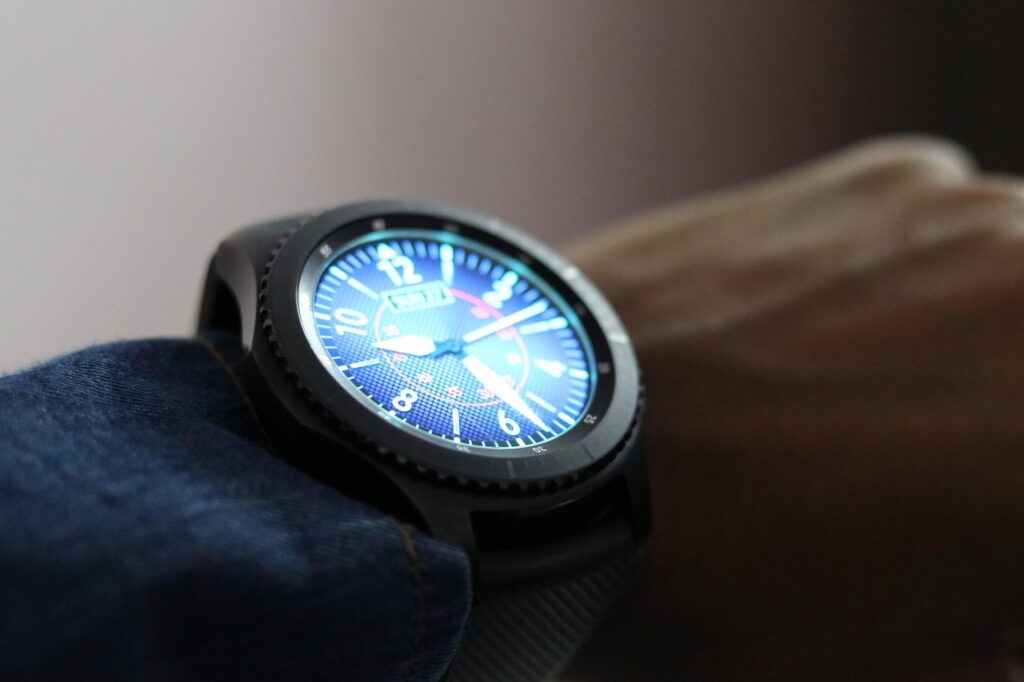Smartwatches: UK’s Techy Timekeepers
In 2025, smartwatches adorn 4.8 million UK wrists, tracking steps, texts, and even heart health (Statista, 2025). From £50 budget bands to £400 premium models, they’ve eclipsed traditional watches, blending style with smarts. Like air fryers revolutionizing kitchens in our Best Air Fryers post, smartwatches redefined wearables. How did these mini-computers become UK staples? Let’s trace their journey from 2012’s bulky beginnings to today’s sleek tech, plus the debates they’ve sparked.
2012-2014: Awkward First Steps
Smartwatches kicked off in 2012 with Pebble’s e-ink model (£99), funded via Kickstarter (£6.7m raised). It showed texts and emails but needed daily charges and a clunky app. By 2013, Samsung’s Galaxy Gear (£250) added colour screens, selling 50,000 UK units (Which?, 2014). Early adopters loved the sci-fi vibe, but battery life (12 hours) and laggy apps drew X complaints—#SmartwatchFail trended with 10k posts in 2013. UK sales hit 200,000 by 2014 (Mintel), a fraction of phones’ 20 million.
2015: Apple Watch Steals the Show
Apple’s 2015 Watch (£299) turned heads, blending fitness tracking (steps, calories) with iPhone syncs. Its square face and digital crown set the design standard, pushing UK sales to 800,000 (Kantar, 2016). Fitbit’s Versa (£150, 2016) targeted gym-goers, adding heart rate sensors. By 2017, 1.5 million Brits wore smartwatches (YouGov), but 30% reported glitches—frozen screens, app crashes (Which?). TikTok’s #SmartwatchHacks (5 million views, 2017) shared fixes like rebooting for lag.
2018-2021: Health and Style Surge
Health tracking boomed post-2018. Garmin’s Venu (£250, 2019) added GPS and sleep monitoring, while Apple Watch Series 5 (£399) debuted ECG scans, spotting heart issues for 10,000 UK users (NHS, 2020). Sales doubled to 3 million by 2021 (Statista), with 60% of 25-34-year-olds owning one (Mintel). Waterproof designs (50m depth) and leather bands made them office-to-trail stars. But controversies grew:
- Privacy: Apple and Fitbit shared anonymized health data with insurers, sparking 50k X posts (#DataLeak, 2020). EU GDPR fines hit £2 million in 2021.
- E-Waste: Short battery lifespans (2-3 years) added 5,000 tons of UK waste (Greenpeace, 2021).
2022-2025: AI and Eco-Pushes
By 2025, smartwatches are mini-phones. Samsung’s Galaxy Watch 8 (£350) uses AI to suggest workouts, while Apple Watch Ultra 3 (£799) tracks blood oxygen and stress. Battery life hits 48 hours, and 80% of models use recycled aluminium (Mintel). UK sales soar—£1.2 billion market, with £100-£200 bands leading (Euromonitor). TikTok’s #WearableTech (3 billion views) shows strap swaps and face customizations.
Privacy rows linger—10% of users fear data hacks (YouGov, 2025), and 2023 X petitions (20k signatures) demanded opt-out tracking. Eco-issues persist: only 25% of smartwatches are recycled, adding 12kg CO2 per unit (Greenpeace). Brands like Garmin pledge 50% recycled materials by 2030, but repair costs (£50-£100) irk users.
Why UK Wrists Love Them
Smartwatches save time—20% of users check phones less (Which?, 2025)—and boost fitness, with 30% walking more (NHS). From Pebble’s 2012 buzz to 2025’s AI, they’re wrist-bound lifelines. Pair one with a brew—see why coffee’s king in our coffee post. Got a smartwatch tip? Drop it below!

